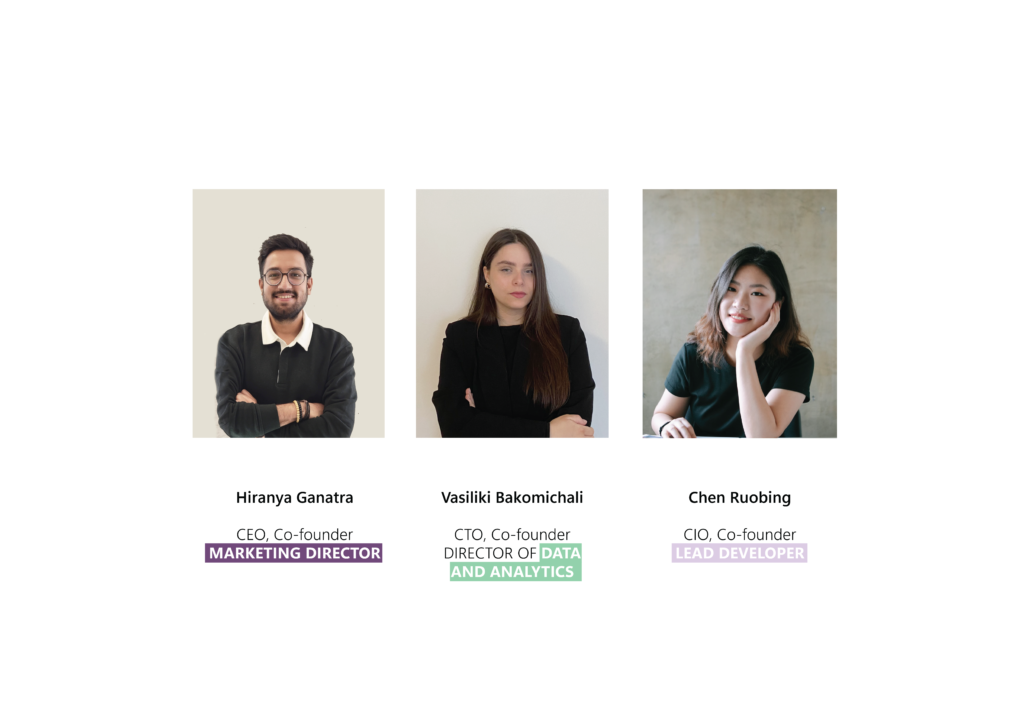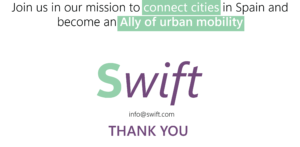“Your new ally in Public Transportation”
– Problem –
Today, urban commuters who rely on public transportation are faced with four principal challenges:
- The significant time is spent dealing with latencies in transportation on a daily basis (waiting time, ticketing process, validation).
- The complexity of machine/app ticketing systems coupled with the absence of in-person passenger support.
- The lack of accurate real time data (ETA, waiting time, occupancy, disruptions)
- The repeated logins for various transport apps and the limited storage for downloads on mobile devices or the multiple transportation cards/tickets in passenger’s possession.
– Solution –
A multi[modal-city] transport application that enhances passenger’s experience and improves public transport system’s efficiency across different cities, at the country level.
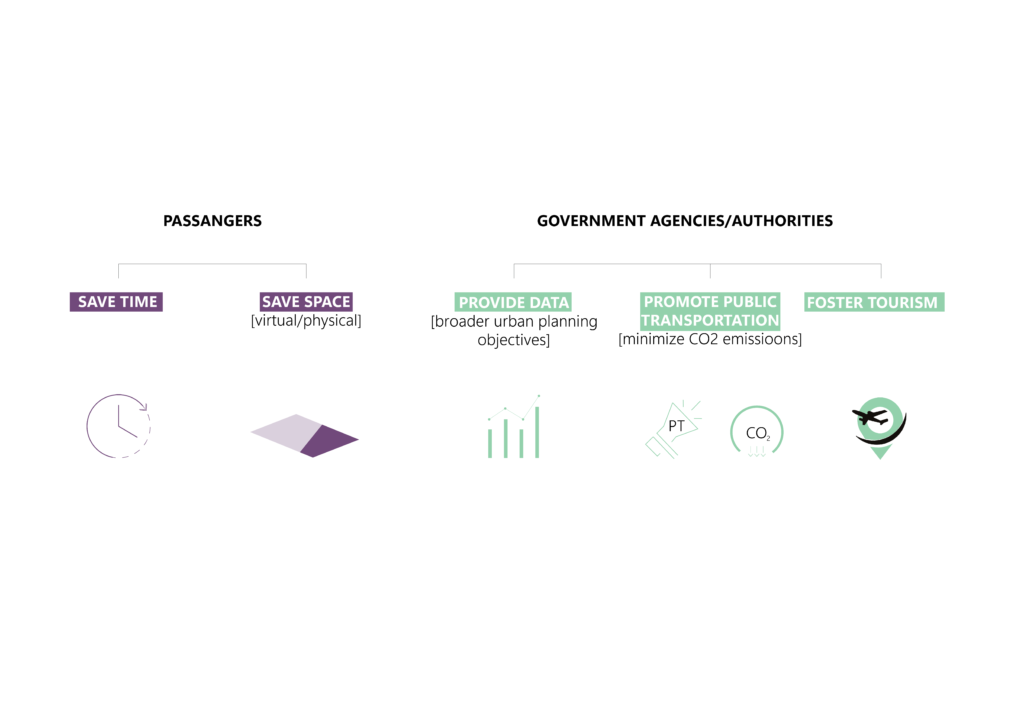
– Why now? –
The covid-19 pandemic has significantly changed our perception of public transportation. Today, passengers are seeking to:
- Minimize time spent on commuting.
- Maintain distances and avoid overcrowded spaces.
- A contactless movement a touch-free experience.
At the same time, the European Green Deal includes a target to reduce transport-related greenhouse gas emissions by 90%, by 2050.
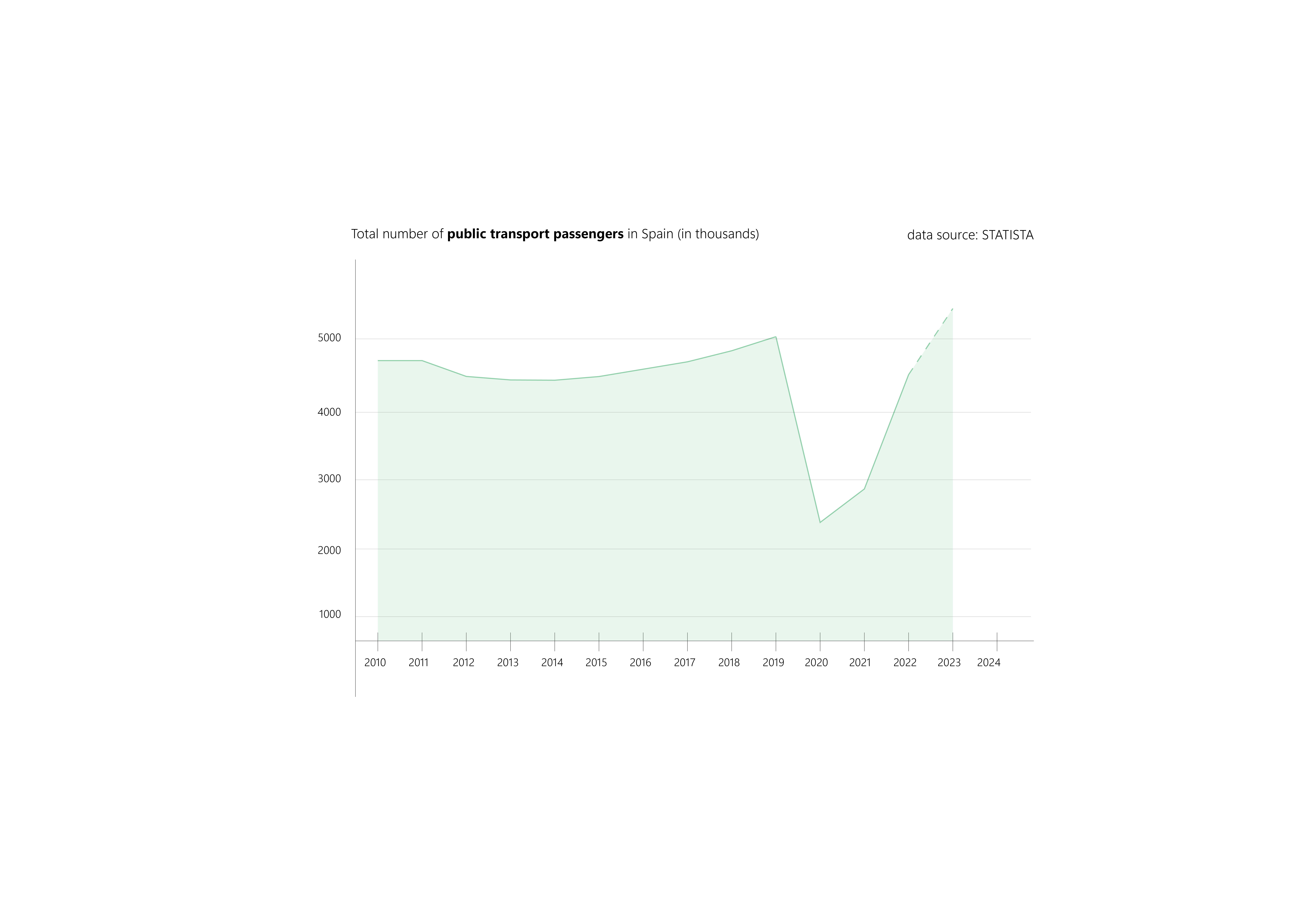
Despite a significant decrease in public transport usage during the pandemic, the industry is now in a phase of recovery and is expected to experience considerable growth in the upcoming years. Therefore, efficient, seamless yet safe movement is a necessity.
– Competition –
The current ecosystem (applications-ticket machines-scanners), with a specific focus on the already well-established advanced transportation apps, is not fully addressing these challenges. This is particularly evident in four European cities (Vienna, Barcelona, Madrid and Bilbao), with a special focus on Spain. Their analysis and results can serve as an illustrative sample of the broader industry trends.
- No existing application integrates various modes of public transportation.
- Typically, one can either purchase tickets/ recharge cards or plan a trip with explicit directions, but a combination of both is uncommon. In instances where such a combination exists, there is no provision for direct payment based on the selected route.
- There is a lack of daily information on disruptions that leads to changes in timetables.
- The advanced ticketing applications are not synchronized with the scanning infrastructure.
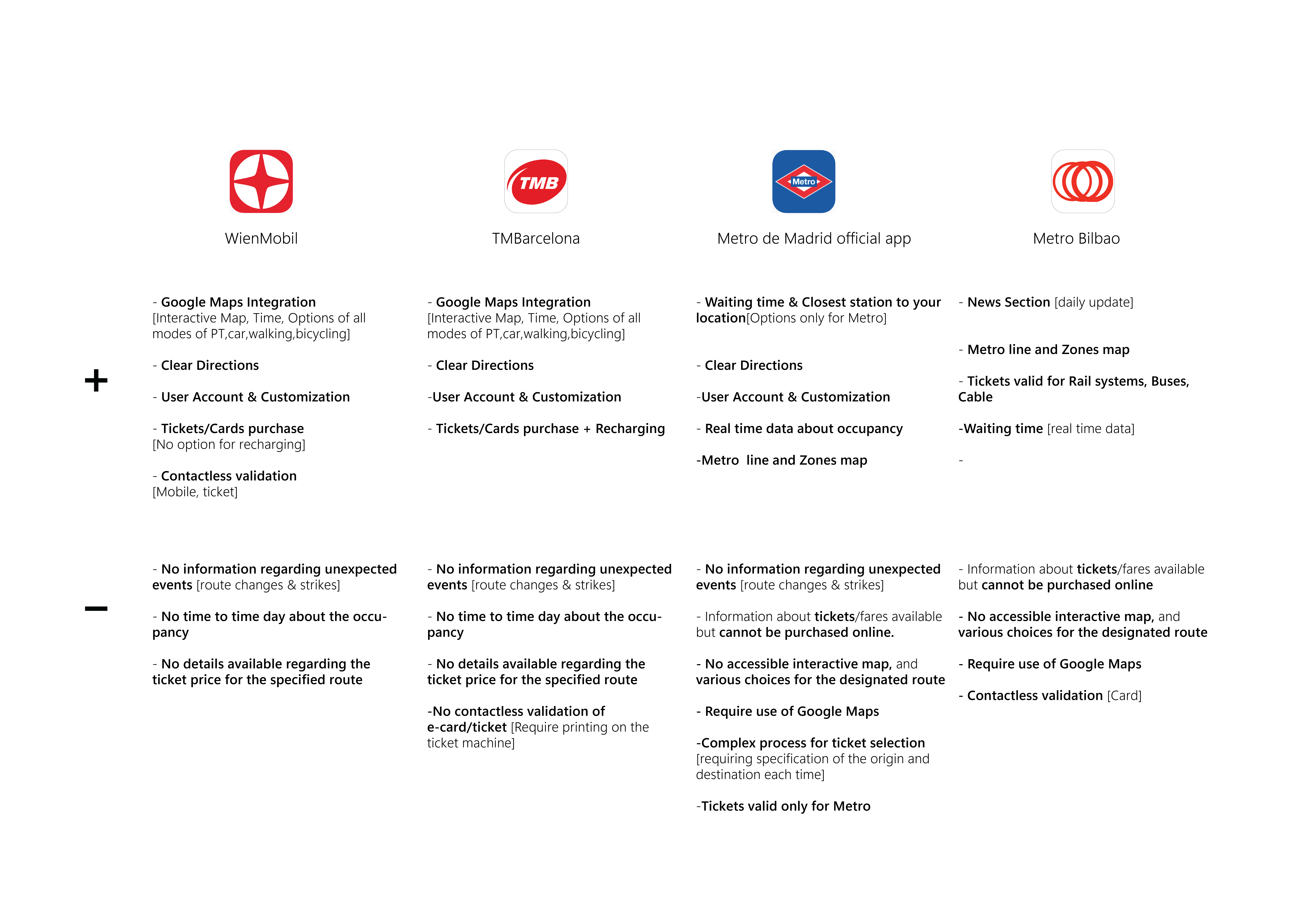
– Traction –
The need for a solution like Swift is evident through the numerous applications currently provided by the city council, each with millions of downloads. This presents a significant market potential. The platform aims to continually improve by incorporating feedback from these apps, ensuring an enhanced user experience and a sustained competitive advantage.

– Product –
Swift emerges as a comprehensive solution to these issues. It offers an open platform specifically for major Spanish cities, enabling users to not only purchase tickets but also access real-time information about timetables and disruptions all in one place. Swift aims to provide a seamless experience from the first use to daily life, characterized by a user-friendly and refreshing app interface. This approach is designed to streamline the public transportation experience, making it more efficient, and convenient.
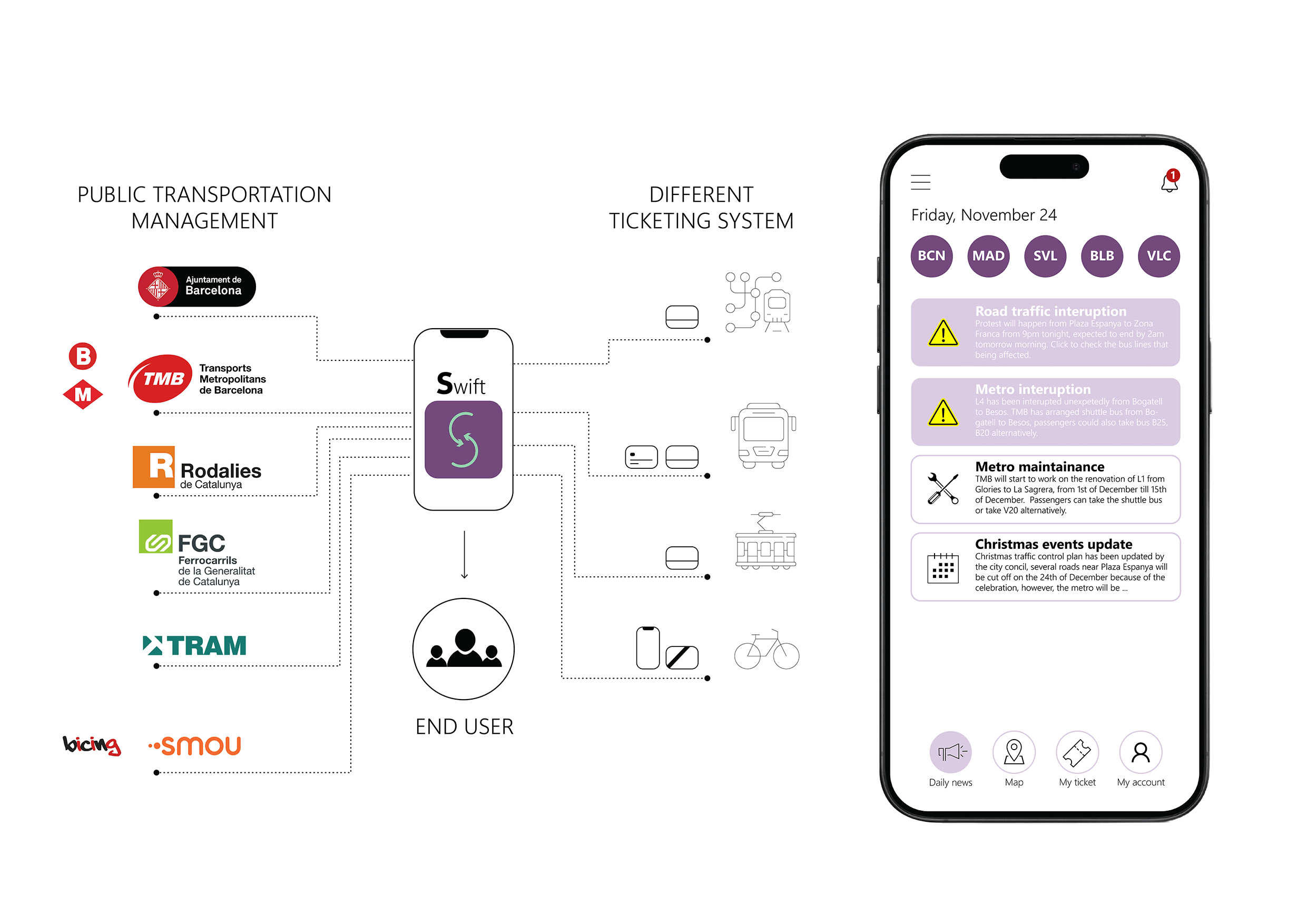
– Target Customers –
Primarily being a B2G business, Swift aims to partner with government agencies to implement the user-friendly mobility solution across the city of Barcelona as its pilot and ease the commute for all its citizens and the tourists visiting the city. Making daily commuters and the tourists primary target customers, making it partially B2C, hence promoting public transport.
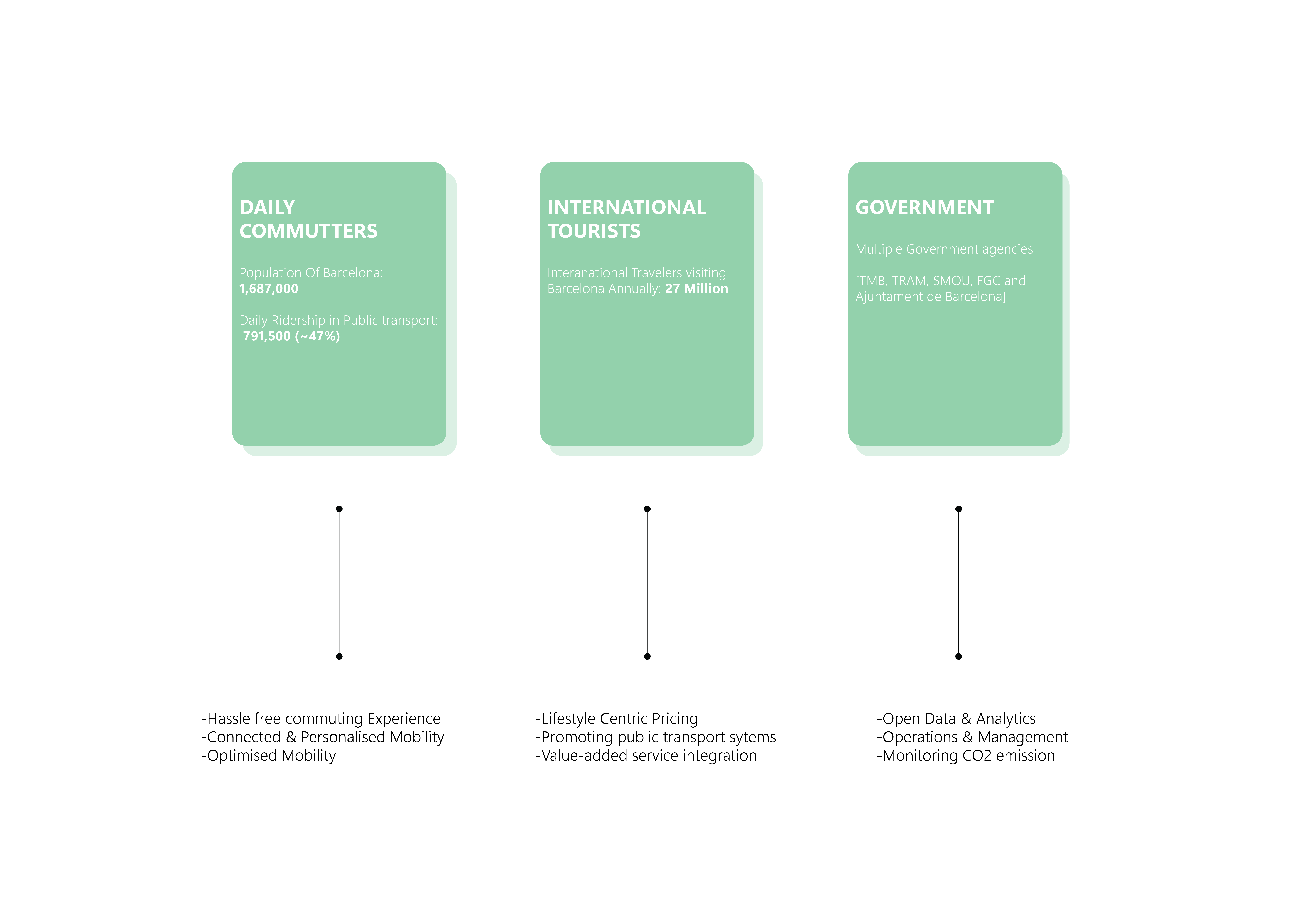
– Market Size –
Swift aims to target a Serviceable Obtainable Market of 745 Million Euros considering Barcelona as its pilot and as we progress further, larger market sizes can be targeted steadily.
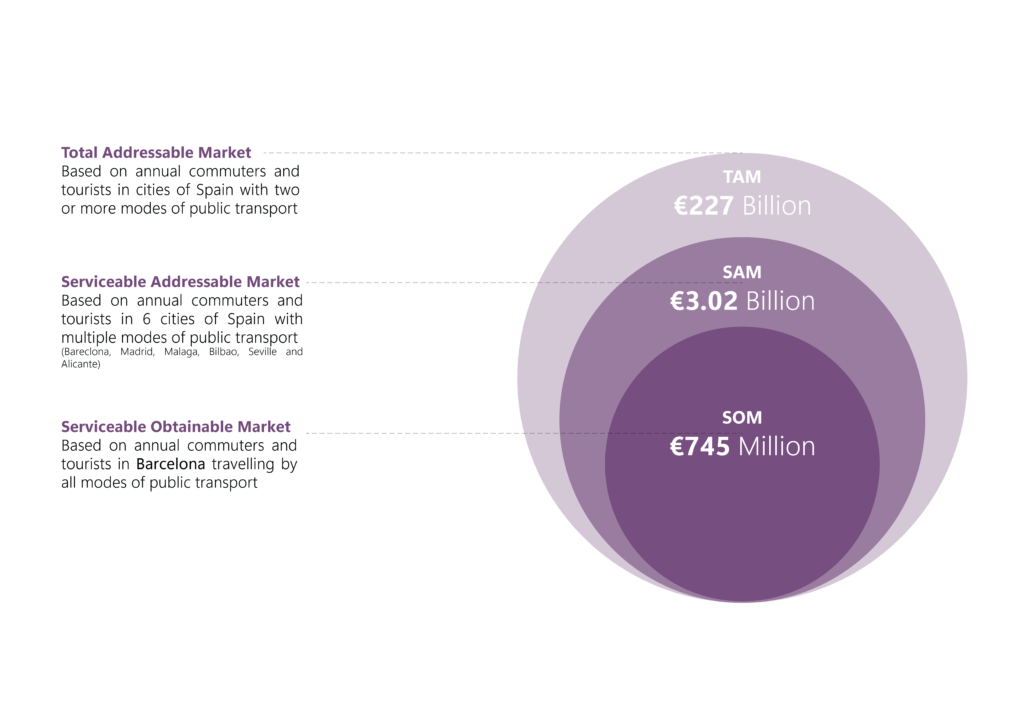
– Business Model –
The business plan is to start by 2024 with a market-ready application and launch it by the end of 2024, with the support of strategic and financial partners. Our aim is to achieve the systems integration within the city by the end of the year. Swift would charge a 10% fee per ticket or subscription to create a potential revenue stream in return for handling the operations and maintenance costs for the platform, with a potential expected turnover of 75 Million Euros. By the end of 2030 we expect to expand our services across all the metro cities of Spain
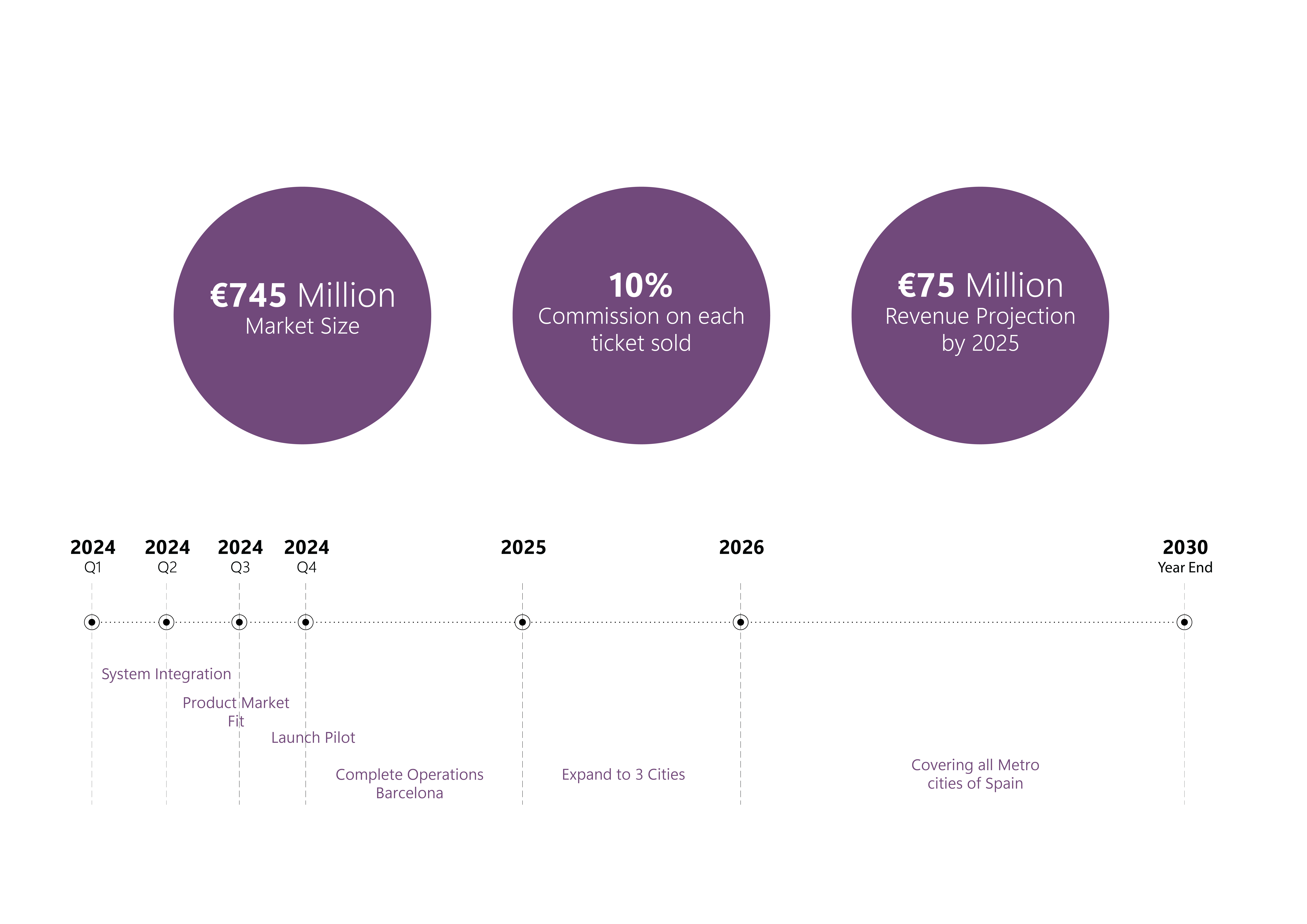
– Ask –
Swift’s ask for the platform is 500,000 Euros for the following expenses as depicted below making us sustain for the next 18 months till we start generating a steady revenue.
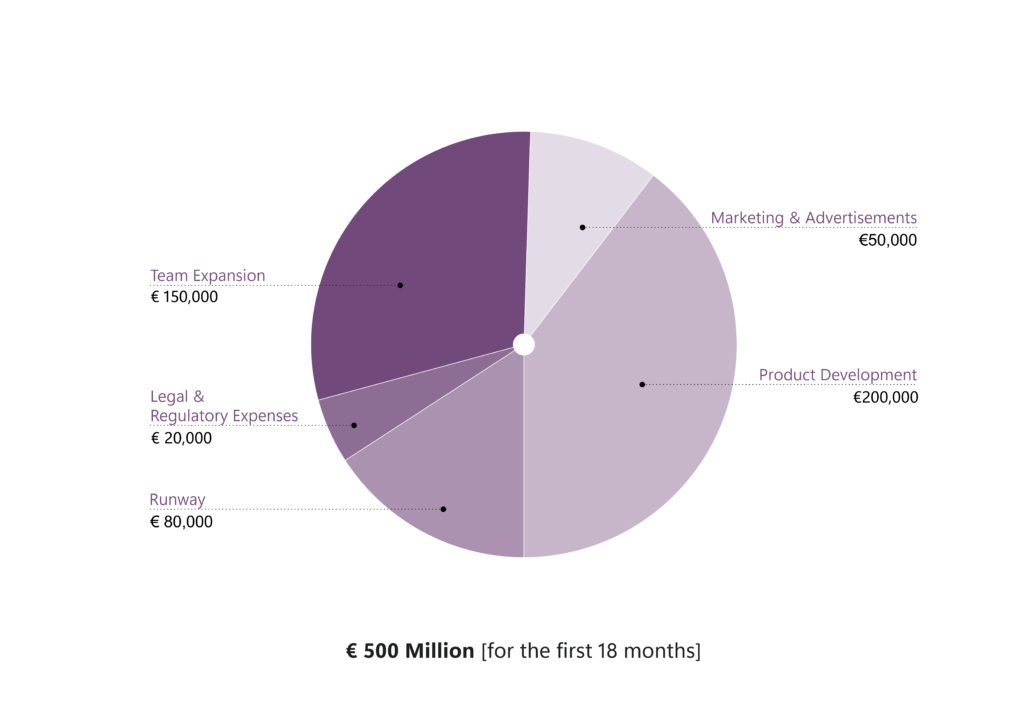
– Team –
With a diverse team of three co-founders contributing expertise in Marketing, Tech, and Design, the goal for Swift is to achieve platform market fit and launch by the end of 2024. This will be accomplished through the establishment of key strategic and financial partnerships.
